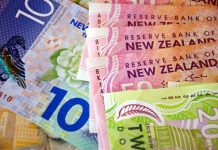US stocks fell on Friday, after the latest data showed that Americans got more jobs in November, and more importantly they got a better pay. Wages grew by 0.6% over the month, which was the biggest monthly gain, and the double of what was penciled on by analysts.
Of course, the news was great for the American workers, but much less so for the Federal Reserve (Fed), who is dreaming of a softer US labour market, and weak wages so that people could just STOP spending in hope that inflation would fall.
But nope, it’s just another month of strong US jobs data which certainly got Mr Powell to scratch his head.
Investors just… don’t want to price Fed rate at 5%
More, and better paid jobs fueled US inflation expectations, boosted the Fed hawks, and brought forward the idea that the Fed could be attracted by another, a fifth 75bp hike in the December meeting,
US equities fell and the dollar gained.
But then, the S&P500, which gapped lower at the open closed the session almost flat, and the US dollar index gave back all post-jobs gains to close the week where it was before data, and even came lower in Asia this morning.
Why?
Probably because investors priced in the fact that the Fed won’t increase its rates by 75bp this month. It will probably increase them by more in the first half of next year. But that information doesn’t go through for some reason, and the pricing for the Fed’s terminal rate is still below 5%.
So be careful, even though the rally in equities looks like it could continue, and the weakness in the US dollar is what could mark the last weeks of a chaotic trading year, we will certainly see these forces reverse in the first weeks of January, if not before.
S&P 500 at crossroads
The S&P500 closed what was normally supposed to be a week of losses with gains. The index added more than 1% last week, and closed the week right at the top of the year-to-date descending channel, and above its 200-DMA.
The RSI index doesn’t point at overbought conditions, the MACD index is slightly positive, and the volatility index slipped below 19, low volatility being a sign of improving risk appetite, and potentially sustainable gains.
Is there a possibility for this rally to extend despite all the red flags? Yes! There is, though, with the risk of Jerome Powell sounding like at the Jackson Hole speech back in summer – which had destroyed the market mood in a couple of minutes.
The next big data is due next week, on Tuesday, a day before the FOMC decision. Until then, investors could give themselves the luxury to dream about a dovish future.
The freefalling dollar
Until then, we could see the US dollar lose more field against most majors, if we are lucky enough. The EURUSD for example gained more than 10% since the end of September, as Cable gained nearly 20% since the Liz Truss dip.
As such, the US dollar rebound seems a bit aggressive, especially knowing that the market has been refusing to price in a terminal rate for the Fed above 5%.
So, there is a risk that we don’t see a one-sided dollar selloff when the Fed remains sufficiently hawkish – and when the market pricing will have to match the Fed talk at some point.
But the latest dollar selloff is a hint that the US dollar has certainly peaked this year, and next year will be, despite some Fed hawkishness, and some rebounds, a year of softening for the greenback and recovery for other currencies.
OPEC doesn’t cut output
The weekend was rather eventless, as OPEC decided to maintain its daily output restriction unchanged at 2mio barrels per day at Sunday’s meeting, which could be seen as a negative development for the bulls.
But there are two price-supportive developments that could limit losses below the $80pb.
First, Europeans finally agreed on the Russian oil price cap at $60pb, that Russia refused – hinting that the Russians could reduce their oil output in the coming months, which would than reduce the global supply and push prices higher.
Second, China is easing Covid measures. The Chinese reopening could counter the global recession odds and support oil prices.
In US crude, strong resistance is seen at $85pb, 50-DMA.














